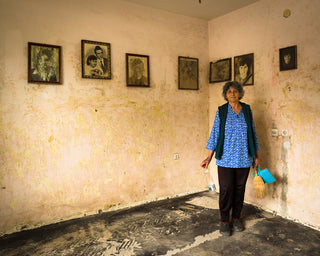I met the photographer Wyatt Gallery one afternoon at Miss Lilly’s thru a mutual friend and we chatted about my interviews and his upcoming trip to Bosnia, and why he was going. Him and photographer Kareem Black initially wanted to document the massive Bosnian floods and their affect on the buildings and population, but their attention was diverted elsewhere: The risen water had unearthed entire minefields. One of the most prevalent mines in Bosnia are the PROM-1 mines, which are water and weather resistant and last up to 100 years dormant underground. But because the mines are underground and difficult to photograph, and because the flooding doesn’t affect those of us in the States, the media coverage is sparse. Working with a woman named Veda and her group More Than Nothing working for Balkan flood and mine relief, Wyatt and Kareem went to Bosnia and shot the minefields, the effects of the floods, and the people who were there to help. “Veda named the group More Than Nothing, which is kind of a dark title. But we’re over there and we’re trying to do more than nothing, [because] everybody’s doing nothing,” says Kareem.
Wyatt and Kareem don’t consider themselves photo journalists – Wyatt’s an award winning photographer, bringing awareness to places affected by natural disasters for support. Kareem’s body of work can be seen in Fader, GQ, Inked, and other magazines, and he has shot for Reebok, Verizon, ESPN to name a few. Since 2004’s tsunami, the two have been visiting countries like Bosnia and Haiti, where they capture what they see in hopes of bringing awareness – not for notoriety or money, but from a calling and feeling of duty to make others see, as well. “We aren’t professional journalists or war photographers or anything, so for us, we [are] strongly impacted by the [aftermaths],” says Wyatt. Read more below:
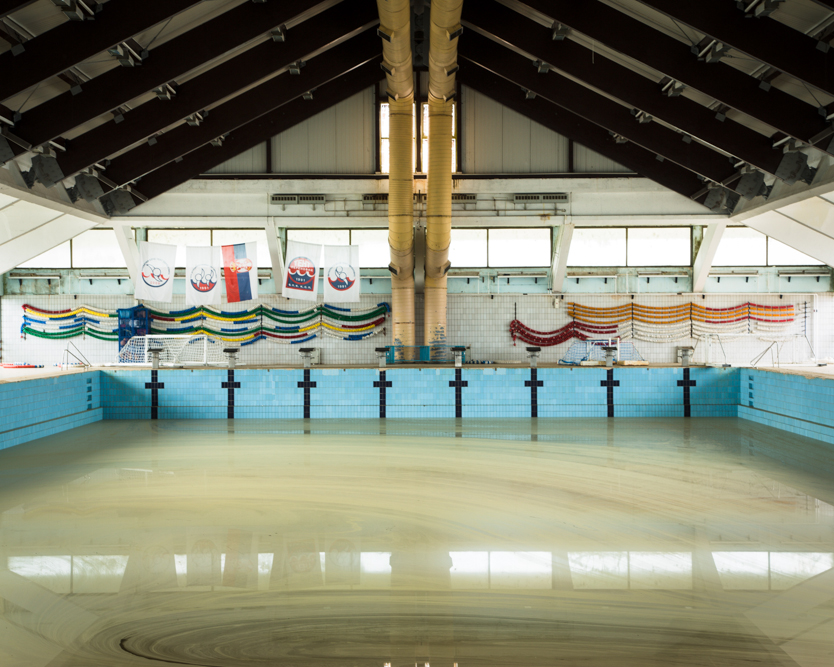
A still-flooded Olympic-sized pool in a now-closed Bosnian recreational center. Shot by Wyatt.
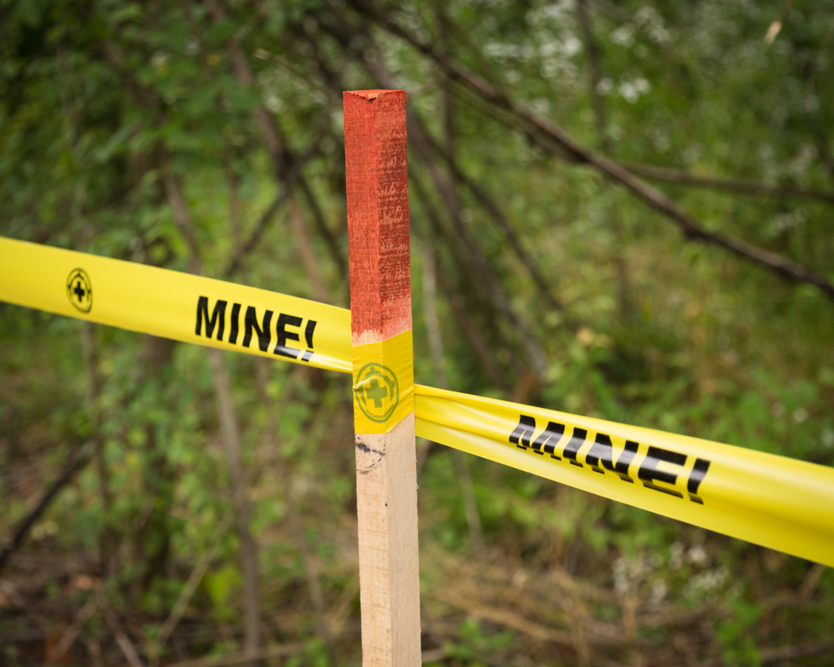
Mine markers. Shot by Wyatt.
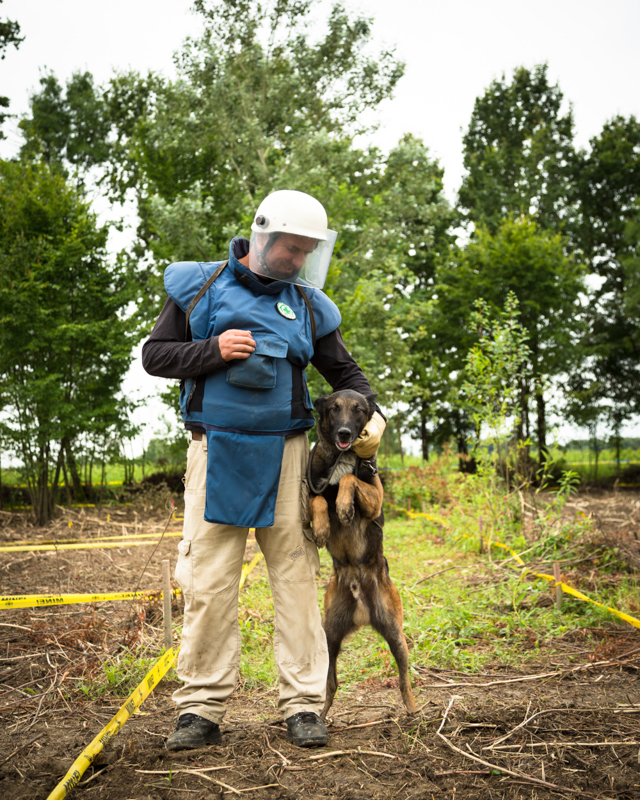
A minehunter from Norwegian People’s Aid working in Bosnia. Kareem shared that the “safe” walkway between the fields is only about 2.5 feet wide. Shot by Wyatt.
PETE: We read that you initially went to Bosnia to document the floods in May that affected a quarter of the population, but became interested in the minefields. Can you tell us more about it and what happened after the flood?
Wyatt: Kareem contacted me to join him at a meeting that Veda, a Bosnian friend of his, was organizing. She wanted to do something to help the people of Bosnia after the massive floods they had that weren’t really making it into the media.
Kareem: Yeah, she wanted to bring awareness to this whole thing that was getting no media coverage at all. Bosnia got three months worth of rain in three days and there was massive flooding – like you said – a quarter of the population was misplaced. But the other thing that was happening was – Bosnia has basically been in perpetual war for hundreds of years. And the war in the ‘90s left these minefields everywhere, and Bosnia apparently didn’t have the infrastructure to remove all the mines and what they did was they just say, “Mines are in these areas. No one go to these areas.” And people would stay out of the areas.
And the rains and the floods that happened moved the mines – they moved these mine fields. The rivers flooded so badly that, literally, they went up to the bridges 60 ft high it looked like. So what they feared was it picked up mines on the banks of the rivers and displaced them to where they don’t know where they are. So they just don’t know anything really. They don’t know where they are so it’s even more dangerous.
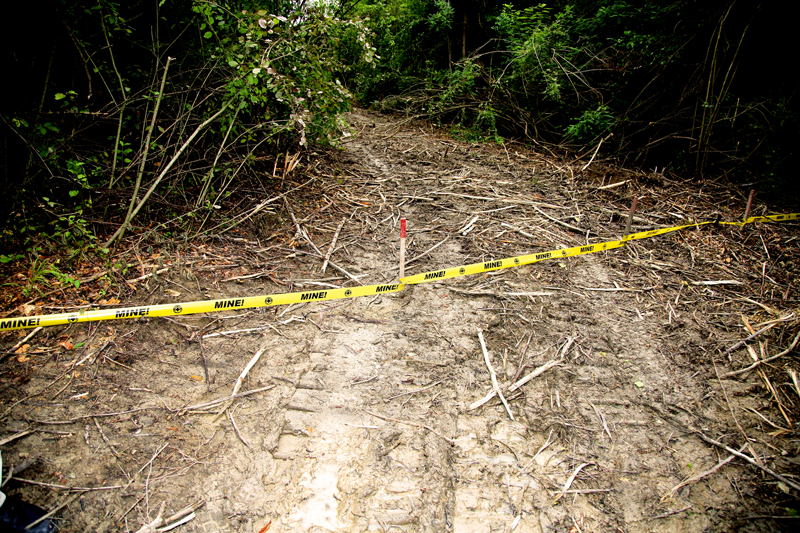
Shot by Kareem.
Tell us more about the PROM-1 land mines that Bosnia is riddled with?
Kareem: Apparently the PROM-1 is the most prevalent land mine. There are tens of thousands of these things, they last for a hundred years. The insidious things about these things [is that] once they’re disturbed – once you step on them they pop up, maybe four feet, and then they explode. They don’t explode underneath the ground. Literally, they bounce up and then explode, and everybody within 100 yards is dead. And then 300 yards is wounded. They’re water resistant, weather resistant, heat, cold, I mean, they will be there until they are disposed of. It’s crazy. It made me think, “Who does that?”
The weird thing was – so we’re in this minefield and there are these areas – a live minefield – but there are areas that have been completely cleared and they’re marked off by yellow tape. And it’s probably about two and a half feet wide so everybody’s in a line. And on the other side of that tape they don’t know where the mines are basically. I remember being there and I’m trying to get around this motherfucker trying to get a shot or something and my foot ends up crossing the tape. I just got mobbed. They’re like, “Yo, get off!” And I felt so stupid and I thought they were yelling at me for being an idiot, but they’re yelling at me because I’m endangering everyone’s life at this point. They’re not just like, “Kareem, you’re an idiot for doing this.” They’re like, “You have put our lives in danger.” That’s crazy!
Wyatt: If it blows up, someone a football field away is going to die. That’s crazy to comprehend.Let’s be honest, most of us are not thinking about Bosnia over here in America. I had no real clue of the situation. So the point is, let’s show some people that this is still a situation. That these minds are dangerous, they exist, and maybe we can help to raise money to give to these organizations that are clearing the fields, so that they can create farms and give people jobs in Bosnia.
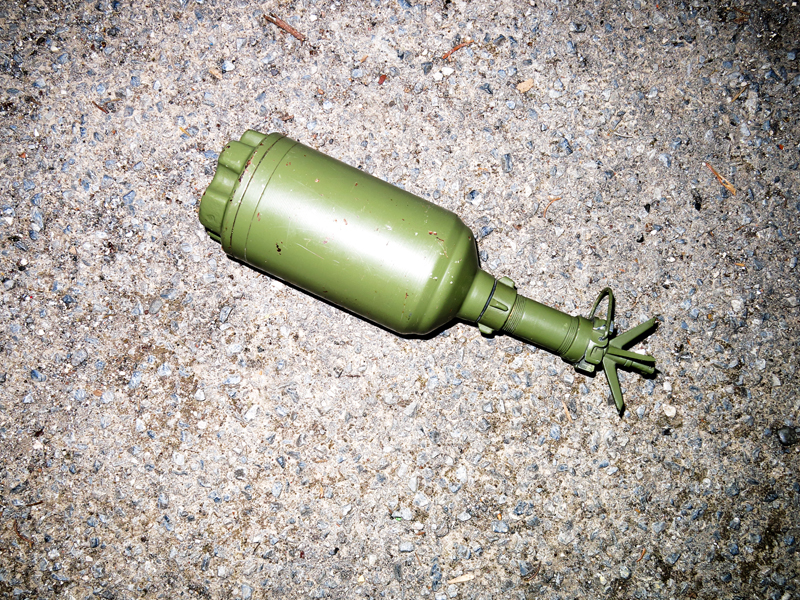
The PROM-1 mines. Read more about them here – once triggered, they shoot out of the ground, exploding and wounding anyone standing within 300 yards. That’s a little over 2 football fields in length. Kareem says, “They’re completely weather resistant, heat/cold resistant, and are effective for 100 years.”
Kareem: The craziest thing when we’re out there is if you look at some of the pictures – Wyatt did a ton of pictures of water lines on buildings. [Stands up and points to top of the wall.] And that’s where the water line is.
Wyatt: Even higher than that, even 15 feet in some places. So the flooding was the first problem and it wiped out a few different towns. Basically the whole first floor, some of their second floors, everything was destroyed by the water and people had to leave their homes. And they don’t have any assistance, the government’s not helping them, there’s no FEMA or anything. The one interesting thing, though, is the communities really come together and help each other. We went to a school and a teacher said that all the teachers came to the school afterwards to help clean it up before they cleaned up their own homes. Because they know that if they don’t clean up the school the school can’t open and then they won’t have jobs. So they’re making it happen on their own.
Kareem: And that was the weird thing. When we were in Haiti, you see the UN and a bunch of US military, because it was right after the – and even when we were in Sri Lanka we would see US military ships off the coast, there’s like an apparatuses. But we didn’t see any of that in Bosnia. Except for the people who were taking us through the minefield. They were a Norwegian charity.
Yeah, they don’t have the infrastructure for that or it’s probably being allocated towards other things.
Wyatt: Yeah… no, they just don’t have it.
Kareem: Another thing about Bosnia that was weird is just – we’re going by buildings and there are buildings that have been destroyed in this war and that war, there were bullet holes everywhere. They’re just beat up. Now the floods and the mines, it just seems like they were like, “Well, okay. I guess we gotta do this. There’s a building falling down over there–,” you know? It’s a lot.
Like you said, they’ve been at war for hundreds of years so it’s already part of their upbringing.
Kareem: That was the thing about the people. Yes, they definitely seemed like, “Yeah, okay, let’s take this on too. Let’s do this.”
Wyatt: They’re used to the struggle.
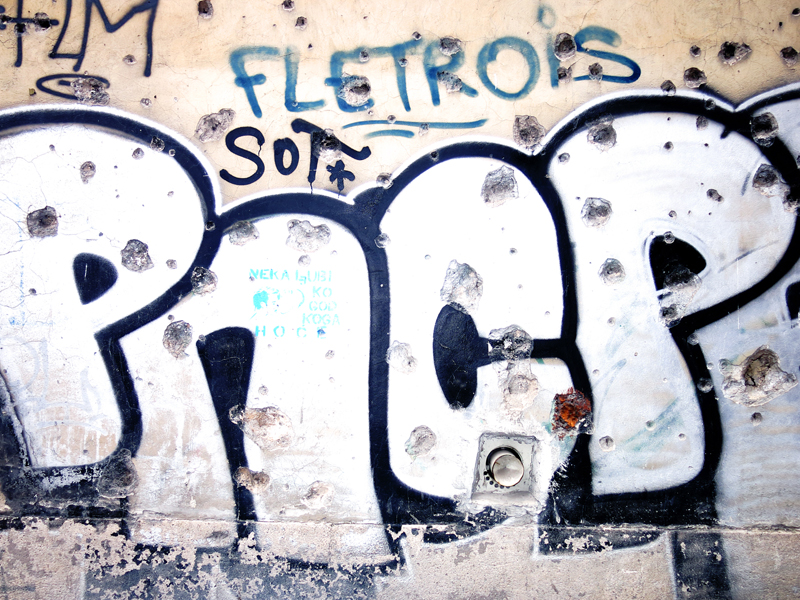
Hole in the wall. Shot by Kareem.
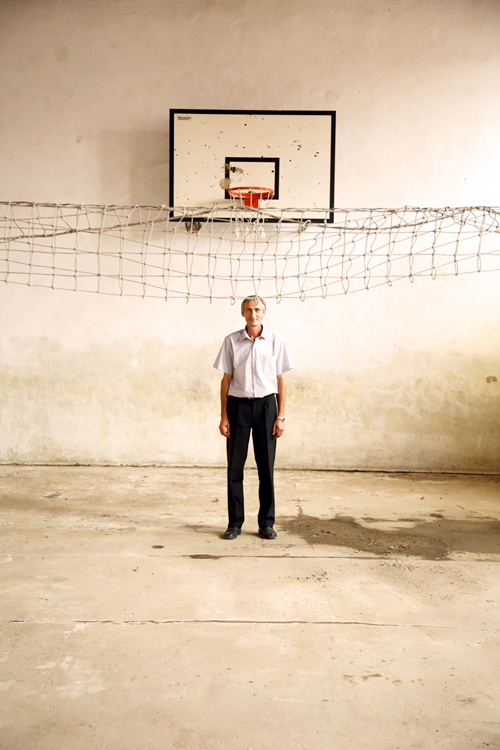
The principal of a Bosnian high school affected by the floods. Shot by Kareem.
Do you think the landmine crisis in Bosnia is going to become a known topic throughout the United States after you bring awareness to it?
Wyatt: I don’t think it’s going to become a major topic of discussion the United States. It doesn’t really affect us, there’s so many other things going on right now. So I think that it’s up to us and people like us to bring it up. We can’t really rely on the media all the time. So that’s what we’re doing.
Kareem: Veda named the group More Than Nothing, which is kind of a dark title. But we’re over there and we’re trying to do more than nothing, [because] everybody’s doing nothing; that’s already being accomplished. If we can shed some sort of light on the situation that would be cool, but I agree with Wyatt. I don’t think it’s going to be – he said it the best, it doesn’t affect us at all.
Wyatt: And we don’t think we’re going to change the world here with this project. But we’re just doing more than nothing. We’re just doing what we can. Kareem and I were not exactly the guys you expect to be covering natural disasters and trying to do some good in the world. Now we’ve done this three times, but in the beginning after the Tsunami of 2004, it was just like a calling – we felt the duty of: “We need to get involved.” We don’t know what we can do, we don’t know what we’re going to do, but we feel like we gotta do something. And we just decided to fly to Sri Lanka a week later. We went in 2005. January. And we spent 10 days or two weeks there after the tsunami and it was disturbing to see it first hand. When we would sit down at lunch, we wouldn’t even speak. We would just sit there staring at the food, staring off in the distance. Sometimes we’d walk around neighborhoods and not take any photographs because we were both just emotionally disturbed. Kareem started painting a school – he started helping out, volunteering at the school for a day. We aren’t professional journalists or war photographers or anything, so for us, we were strongly impacted by the aftermath. Then when the earthquake in Haiti happened in 2012, it was the same type of reaction. I called up Kareem and said, “Yo, we’ve got to go.” And Kareem said, “Yeah.” Then Craig Duffney and Kareem came together and got this group of artists to go to Haiti. And we found really good success with that. We put on an event, we had Mother New York host it, and we raised $15,000.
Kareem: Which is enough to build an orphanage apparently.
Wyatt: Then another company matched that, so we built an orphanage. And the organization we gave it to, they deliver free water every day to these neighborhoods that have no water. So [when] we saw that, we figured out a formula to help create success and help out through the art and photo advertising industry of New York.
Kareem: I don’t know how to deactivate a mine. I don’t know how to build a house. The only thing I’m good at is taking pictures and Star Trek trivia. But if I can go there and take some pictures that people will see in some venue, or do an interview like this – we’ve got a couple different outlets in where the pictures will appear. Maybe people fucking learn what’s happening and give enough of a fuck to – I don’t know, maybe somebody else knows how to build a house; just raising awareness.
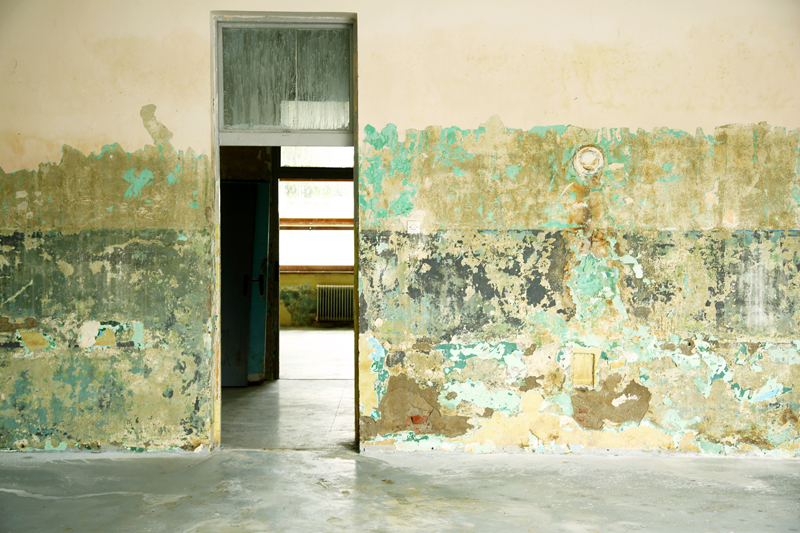
“It was a super powerful visual reminder of the scope of this tragedy. When we came there the water receded, but there were lines in this building that were higher than doorways” – Kareem Black. Shot by Kareem.
Why do you think these issues never made it to the papers or even local media?
Kareem: If there was a flooding over there and there was a ton of oil under the floods and it affected our gas prices, that shit would be in the news. I don’t think it directly affects us at all. And, also, there’s a bunch of other – let’s say sexier – shit happening. Like Crimea and all these other things. Politics.
People have heard about Bosnia already, remember? There’s a war there. People think, “Oh, Bosnia again? Really? This is happening again? And it doesn’t affect us?” They just don’t think it’s sexy enough.
It’s not affecting us at home in any way, so people here in the US don’t care.
Kareem: At all.
Wyatt: Here’s the interesting thing about the Bosnian floods. The water that came into these towns was actually clean water. So when it receded, you don’t see it as much. So it looks like, “Oh, hey, nothing really happened here.” I think that’s very symbolic, because you don’t see these mines. You can look at a field and think, “This is beautiful. This is a fucking beautiful field.” But really, you don’t see what’s lying within that field: These super dangerous land mines.
I think that the flood is very symbolic that the waters came in and destroyed and left it but now it’s invisible.
Kareem: That’s a very good point. In Haiti, the destruction was real. That was somebody’s house and now it’s rubble. The Haitian equivalent of the White House was destroyed. But yeah, waters came in, you can see the water lines, peoples’ lives were fucked up, people died, and now it’s gone. It’s weird.
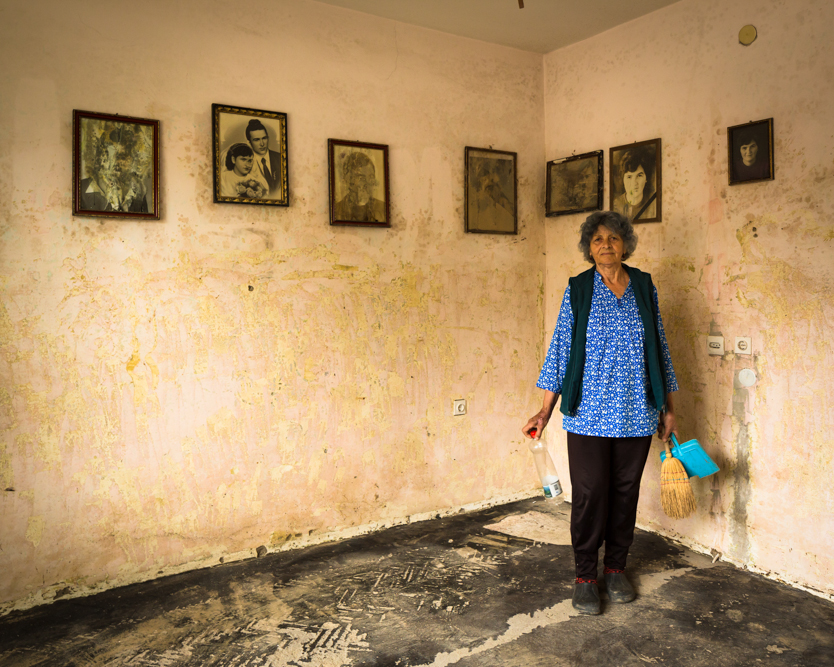
Shot by Wyatt.
How did you go about photographing the land mines? Is this hard to do because you can’t see them?
Wyatt: We photographed a field that was in the process of being cleared. So they showed us the different techniques that they used to search for the landmines and clear the fields. And then from a distance we could see a landmine that they found.
Kareem: They found this anti-tank mine. So this field is being cleared now. When we went there, it was being fucking cleared. They just found this anti-tank mine which is about this big [holds out hands about two feet] and like an upside down plate. It has what looks like an antenna on top. If you or me were to stand on the anti-tank mine, nothing would happen, we’re not heavy enough. But there’s a second way it goes off, that little antenna – it’s not an antenna – it’s like if you move it one way or another enough it will go off.
They were basically like, “Hey, you guys want to see something cool that we just found?” Maybe 15 feet away you could see the mine, clear as day, just sitting there. And they’re like, “Okay, we gotta go, we gotta go, we gotta go.” We’re like, “Why are you shuffling us? You just brought us over here to look at the fucking thing and we can’t even photograph it.” And they’re like, “Well, a deer could come out of the woods or whatever, move the antenna, and we would all die.” Which is crazy.
I know the US has – it looks like spinning wheels but they’re chains and they spin on the end of these long poles and basically they detonate them.
Kareem: I’ve seen a couple different versions but they one they had over there was remote controlled. So there was a guy in a truck maybe 300 feet away and he’s moving this thing around.
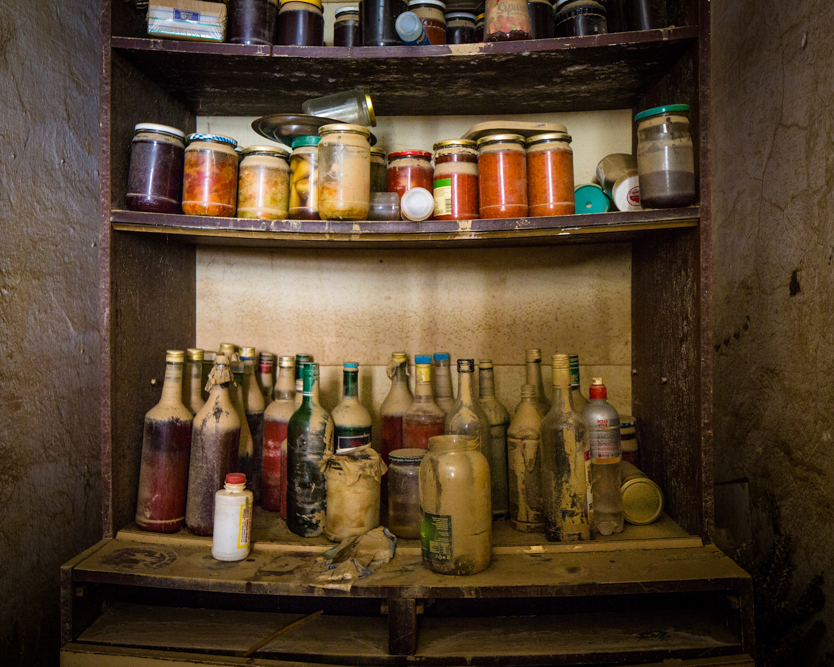
Inside a Bosnian home post-flood. Shot by Wyatt.
It’s got chains on it that activate the mine. Because that’s the only way to detonate them.
Kareem: So that’ll go through the field and then they’ll be like, “Okay, cool, so that went through the field.” Then they go through with guys with dogs and the dogs will sniff out if the machine missed one. Then they have the poor bastard who – I don’t know how you get this job – but he goes in with a little stick. It’s fucked up dude. Who gets that job? “We’ll let Jack do that, we hate that guy.” [laughs]
Your more recent body of work seems to be about drawing public attention towards places affected by natural disaster and the people there. What draws you towards these stories?
Wyatt: For me, natural disasters, I can’t comprehend them. It just shows us as humans how powerless we are to nature. And how we can’t really plan, we don’t know when it’s going to happen, and when it happens it’s so fast that all we can do is just try to get out of it’s way. Material possessions are something that can really define us in our society and then all of a sudden you realize that none of them are worth anything. And that the item of most worth – besides someone’s life – is a photo album. That’s what people affected by a natural disaster normally tell me.
So I just feel like the resiliency within people affected by a natural disaster is so amazing, it’s inspiring to me. I want to tell their story, I want to get inside their homes and their living situation and show a more artful documentary of what’s going on that can pull people in through intriguing beauty and then make them realize the sadness that exists. And through that method create more empathy in the viewer to get involved, to talk about it, to donate money, to volunteer, whatever it is to help out… Right after Hurricane Sandy, New York was filled with photographers so everybody was out there shooting and posting to social media, and I think that it really galvanized the community to get up and go volunteer. I think that photography combined with social media can really do that in this day and age. Not only spread the story, but to inspire people to really get involved.
Kareem: From my point of view it’s sort of like – what I do is shoot celebrities and ads professionally. It doesn’t really contribute anything. There’s an optimistic part of me that’s like, “Look, we’re just like them.” That’s the weird part about travelling to these places, in all my travels all of us have the same hopes and fears and we’re trying to solve the same problems. This is a roundabout way of answering the question, but that’s what I’m attracted to in this. This fucked up shit happened halfway around the world in a town that you’ve never heard of that you’ll never be in, but these people are just like us.
They had a wedding and they had a great time there, look at the photo album, you can see that and we can relate to that. I just think that if you can relate to somebody then you can give a fuck about them. That’s kind of where I’m at.
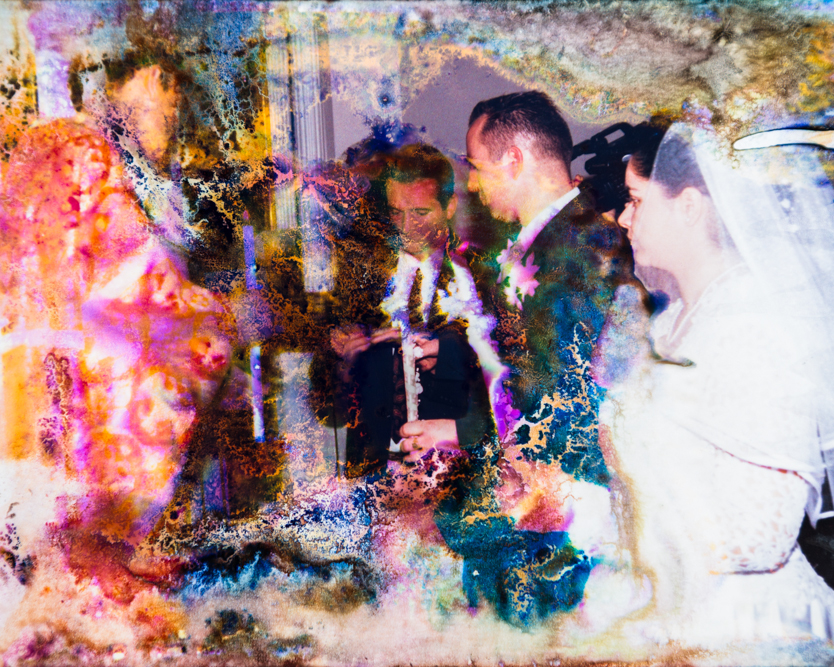
“[Wyatt] did a series of pictures where it’s peoples’ family albums. I guess they were on the first floor of the house and it’s all water-damaged and that’s symbolic too. There’s memories.” – Kareem Black. Shot by Wyatt.
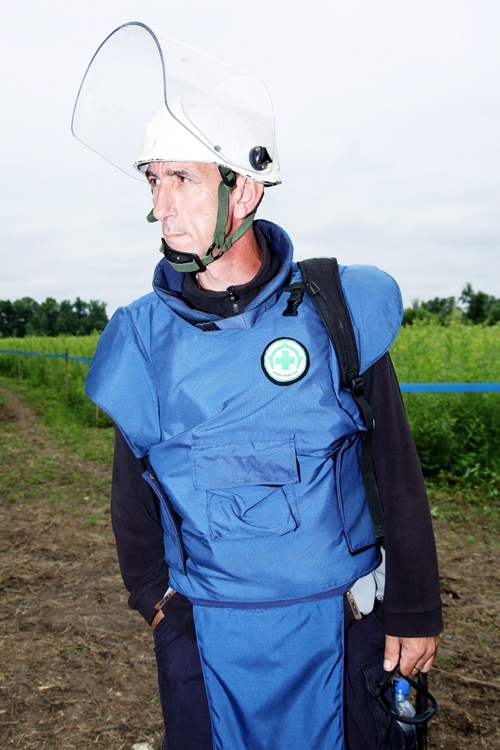
Another mine hunter from NPA. Shot by Kareem.
I think it also gives you some sense of balance too.
Wyatt: It feels good too. Kareem’s got a website, feels good, let’s go. It feels good to do something good for other people and to give back and not have it be about us or about clients or products.
And I think the other thing is that Kareem and I, photographing, don’t have an agenda that you might have to have if you’re shooting it for a newspaper or the media of some sort.
You’re not looking for the tearjerker photo.
Wyatt: …I think when you have an agenda, you miss a lot. You don’t see things that aren’t in your agenda. So you might be missing the real story. For me, what I ended up photographing mostly this time were walls that were damaged by the floods and there was mold and everything on the walls. But then they scraped off the mold and you could see layers and layers of different colored paint. And to me it looked like a painting, but it was so fascinating to see all the different layers that exist beneath the surface. To me, this is very symbolic of life. This is the process of rebuilding.
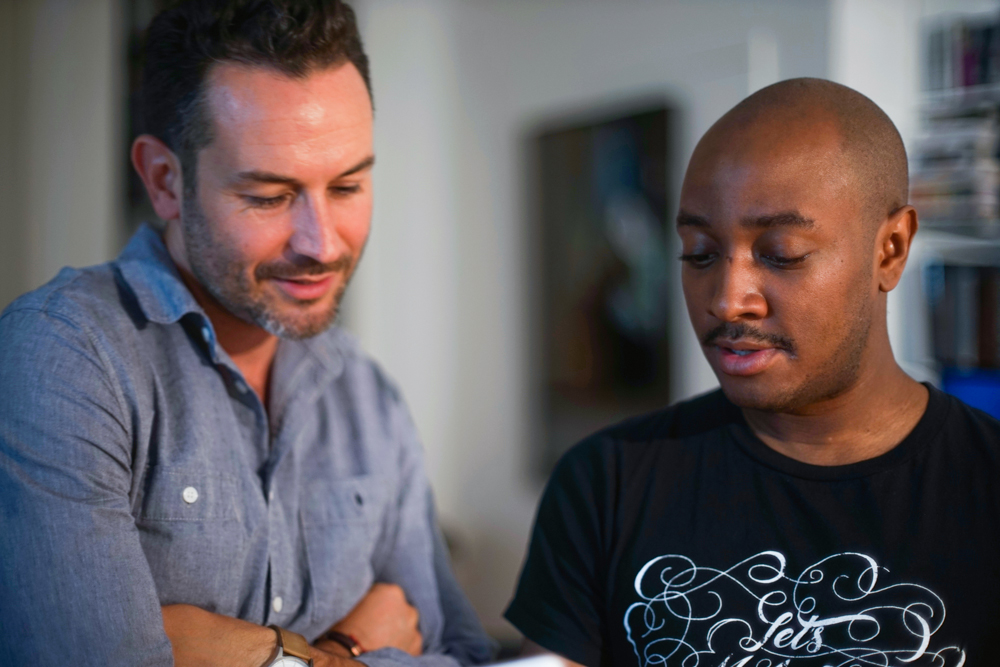
Find out how you can help at MoreThanNothing.org.
And if you find yourself in New York in October, Wyatt Gallery and Kareem Black’s show is at Kinfolk on October 9.

